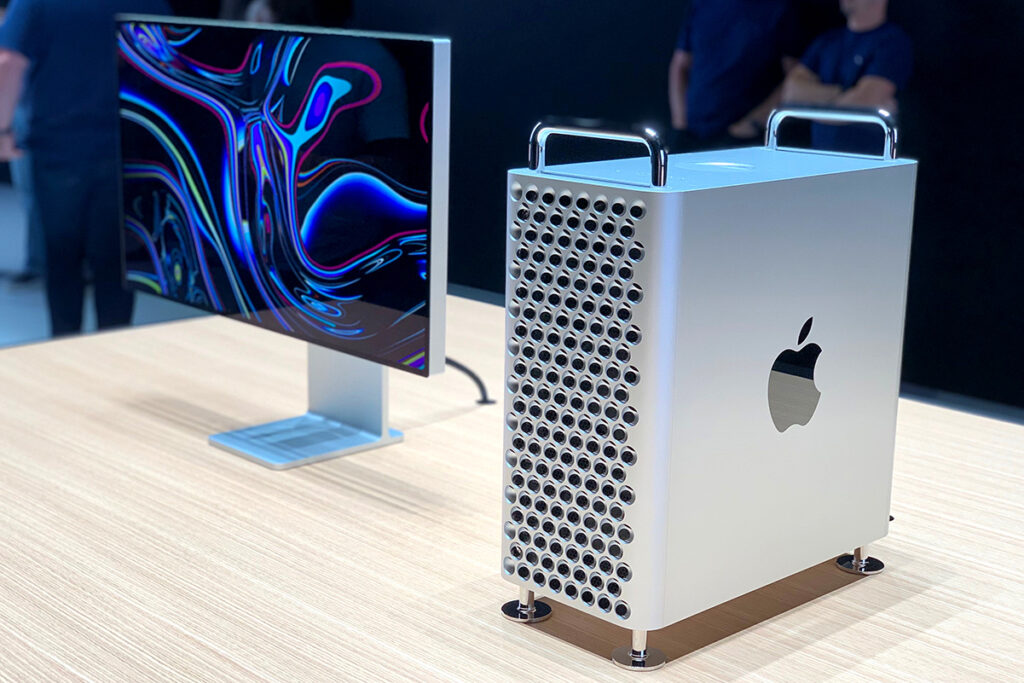These three pieces of old Apple tech have overstayed their welcome

Apple has a reputation as an uncompromising driver of new technology. Look no further than the classic example of shipping the original iMac without a floppy drive or legacy ports, or designing the iPhone without a hardware keyboard, or even killing off the iPod mini to make way for the iPod nano. The company certainly puts forth an image of pushing technology forward without dwelling on the past.
While those examples might get a lot of attention, the Apple of these days is a bigger, more ponderous organization, a battleship that can’t simply turn on a dime. As a result, the move to any new technology takes time, and often what came before isn’t excised in months, or sometimes even years.
As much as Apple might like to see itself as an unstoppable force barreling ever forward, you don’t have to look too far through its lineup to see plenty of places where it’s still clinging to the past, even if it’s out of sheer practicality.
You can’t go Home button again
One of the original trademarks of the iPhone was its single front-facing button. The Home button evolved, gaining a Touch ID sensor and eventually transforming from a physical button into a capacitive sensor with haptics. But its demise was heralded by the introduction of the iPhone X design with its edge-to-edge display and Face ID.
The iPhone SE is the last iPhone with a Home button.
Jason Cross/IDG
But that design debuted in November 2017, almost seven years ago now. And while the Home button has been gradually removed from both the iPhone and iPad lines, it lives on even to this day. The third-generation iPhone SE, which came out in 2022, remains a product in Apple’s lineup, proudly sporting the classic design ushered in by 2016’s iPhone 7.
That said, the Home button’s days seem to be numbered. Rumor has it that a fourth-generation of the low-cost phone will show up next spring, finally bringing it into line with the modern iPhone design. The Home button will shuffle off this mortal coil after almost eighteen years.
There’s a curve describing the practicalities of this kind of design: as Apple produces more of a certain design, doing so gets cheaper—but eventually as it scales up its new models, that old design becomes the outlier, meaning it’s now more expensive to keep around, especially for just a single model. So in the end, Apple saves money and effort by shifting the SE’s design to look like the rest of the phones and bidding adieu to the iconic Home button.
Lightning bolts
When Apple introduced the Lightning connector in 2012, the response would have had you thinking they’d methodically kicked every single one of their customer’s dogs. Its predecessor, the 30-pin dock connector had originated on the iPod back in 2003, but that nine-year tenure had seen an explosion of accessories that relied on it–to think, people who’ve only started using an iPhone in the last decade may have never even seen the once-ubiquitous alarm clock/speaker with a dock-connector built in.
Lightning lives with the Mac’s Magic Keyboard, Magic Mouse, and Magic Trackpad.
Foundry
So last year, when Apple first dropped the Lightning port for USB-C on the iPhone, you might have expected a similar outcry. But perhaps the fact that USB-C had already been on Macs since 2015 and was introduced into the iPad lineup in 2018 helped soften the blow. Plus, in the intervening years the prevalence of wireless technologies, including Bluetooth speakers and Qi charging, made switching out the physical connector less of an issue.
Still, Lightning has not yet been excised from Apple’s products either. In addition to the older iPhones that Apple still sells (the iPhone 14 line, the aforementioned iPhone SE), the Lightning port is still used for charging by Apple’s wireless Mac input accessories: the Magic Keyboard, Trackpad, and Mouse. (Name a more iconic trio, I’ll wait.) And in case that’s not enough for you, it’s also still sneaks in one last place: the first-generation Apple Pencil, which has stuck around for compatibility with all those older iPads out there.
Many of those are surely not long for the world. The iPhone SE’s rumored refresh will undoubtedly switch to USB-C and Apple will probably (hopefully?) update its Mac accessories in the not too distant future—perhaps when a new Mac mini shows up? But that Apple Pencil, well, it may be a few years yet before it’s finally erased.
Quid pro status quo
Stand back, because I’m going to dish the hottest of takes and add to this list of legacy technology hanging on by a thread an entire Apple product: the Mac Pro.
Apple update the Mac Pro with an M-series chip in 2023, but the overall design is over five years old.
Foundry
Look, the Mac Pro might be important for Apple from a psychological perspective, signaling that the company is just at home in a professional environment as it is on the average person’s desk or lap. But even many of the people who today might want a Mac Pro frankly don’t stand to get a lot out of it–or not appreciably more than they could get from a similar specced Mac Studio. Though the Mac Pro might still be the most expandable in Apple’s lineup, that’s in large part due to the incorporation of internal PCI slots that some users might need. But they may be of limited use based on a dearth of available compatible hardware.
I say all of this not to argue that the Mac Pro should disappear, but simply to point out that it is the longest of long tails, a category of product that dates back decades and may never fully disappear, but still fundamentally represents the way computers used to be. For a company that prides itself on relentlessly pushing forward, Apple still can’t quite seem to let go of the past.



